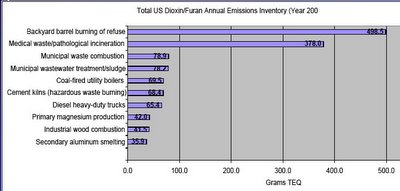Ford sees the linkage between environmental concern with greenhouse emissions (GHG) and its viability in many markets. From its media.ford.com website is posted a PDF of their recent "Ford Report on the Business Impact of Climate Change." On the last page of this document is an appendix (duplicated below) that criticizes state fuel economy statutes in general and California AB 1493 in particular.
--------
DEARBORN, Mich., Dec. 20, 2005 – In an industry first, Ford Motor Company has issued a report addressing the business implications of climate change, carbon dioxide emissions and global energy concerns.
"I am proud to say that Ford Motor Company is one of the first companies to have open discussions about climate change," said Bill Ford, chairman and CEO. "We see climate change as a business issue as well as an environmental issue and we're accelerating our efforts to find solutions. Addressing this issue will require collaborative action across all sectors of our society and I'm committing Ford Motor Company to do its part."
The report addresses how concerns about emissions of greenhouse gases, including CO2, are linked to other factors affecting the business; the steps the company is taking to manage the risks and capture opportunities associated with climate change; and the market, policy, social and technological enablers required to achieve significant changes in the industry’s carbon footprint.
Ford’s report recognizes the importance of precautionary, prudent and early actions to stabilize greenhouse gas concentrations in the atmosphere. It also highlights the need for integrated approaches by fuel companies, vehicle manufacturers, consumers and policy makers.
For its part, Ford Motor Company is pursuing a three-pronged strategy:
• Continuously reducing the greenhouse gas emissions and energy use of company operations.
• Enhancing the flexibility and capability to market lower-greenhouse gas-emissions products that will attract consumers.
• Working with industry partners, oil companies and policy makers to establish an effective and more certain market, policy and technological framework for reducing road transport greenhouse gas emissions.
---------------------
Ford Report on the Business Impact of Climate Change
From the report:
APPENDIX 2: California GHG regulations
In 2002, the California legislature passed a law directing the California Air Resources Board (CARB) to promulgate rules limiting greenhouse gas emissions from motor vehicles. In 2004, CARB voted to adopt a set of fleet average standards expressed in grams per mile of CO2. Final rules incorporating these standards were adopted in 2005. The standards are set to take effect beginning with the 2009 model year and become increasingly stringent through the 2016 model year. Several other states, including New York, Connecticut, Massachusetts, Vermont, New Jersey, Pennsylvania, Rhode Island, Oregon and Washington, have either adopted parallel regulations or are in the process of doing so.
Ford supports the reduction of vehicle CO2 emissions and is working aggressively toward the development and implementation of real, market-based solutions. However, the entire automobile industry is united in opposition to the AB 1493 rules because they constitute state fuel economy standards. The federal Corporate Average Fuel Economy (CAFE) law calls for a single, nationwide fuel economy program and prohibits individual states from regulating vehicle fuel economy. State-by-state regulation of fuel economy is unworkable because it raises the prospect of an unmanageable patchwork of state standards. Moreover, the AB 1493 regulations seek to impose a fuel economy task that is far more steep and severe than any that has been ever been imposed in the history of CAFE. As time passes and the standards grow more stringent, many if not all manufacturers will have to severely restrict or eliminate sales of larger cars and trucks in order to maintain compliance. Even with our commitment to step up hybrid production and embrace innovative technologies, Ford would not be able to comply with these standards without restricting our product lineup over time.
In December 2004, the Alliance of Automobile Manufacturers filed an action in federal court in California seeking to overturn the AB 1493 regulations. All members of the Alliance (BMW, DCX, Ford, GM, Mazda, Mitsubishi, Porsche, Toyota and Volkswagen) supported taking this action. The Association of International Automobile Manufacturers (AIAM), which includes Honda, Nissan, Aston Martin, Bosch, Delphi, Denso, Ferrari, Maserati, Hitachi, Hyundai, Isuzu, Toyota, Suzuki, Subaru, Renault, Peugeot, Mitsubishi, Kia and JAMA (Japan Automobile Manufacturers Association, Inc.), has since intervened in the litigation on the side of the Alliance. The litigation process is likely to take several years. A similar action was filed in Vermont in November 2005, and state court actions related to greenhouse gas rules have been filed in New York and Oregon. Additional cases may be filed as other states finalize their rules.
We believe the Company had an obligation to its customers and shareholders to stand with the rest of the industry in support of a single, nationwide fuel economy program with standards that are feasible. In a letter to senior Company management, CEO Bill Ford discussed the Company’s opposition to the California regulation and reiterated its commitment to address the climate change issue. (The text of the letter is available at www.ford.com/go/sustainability).










